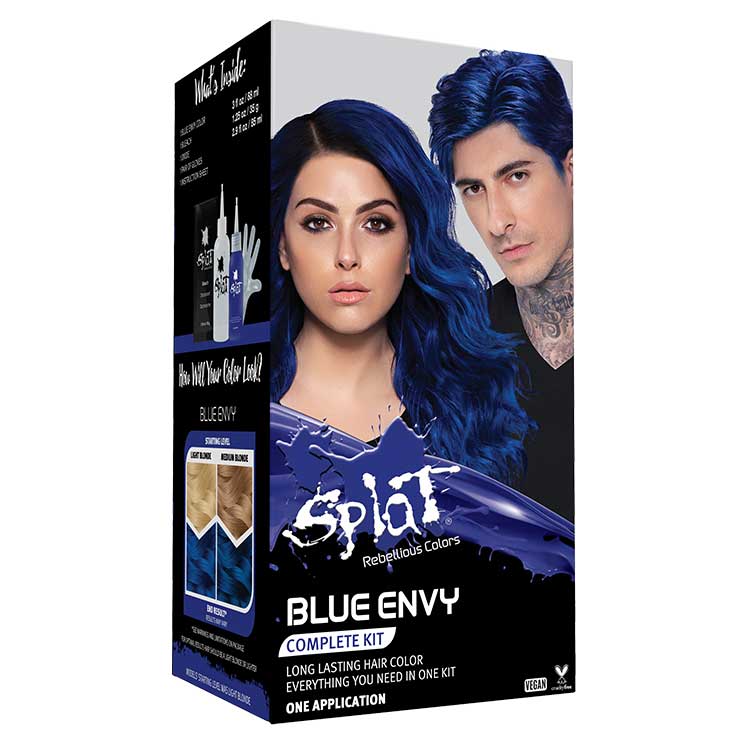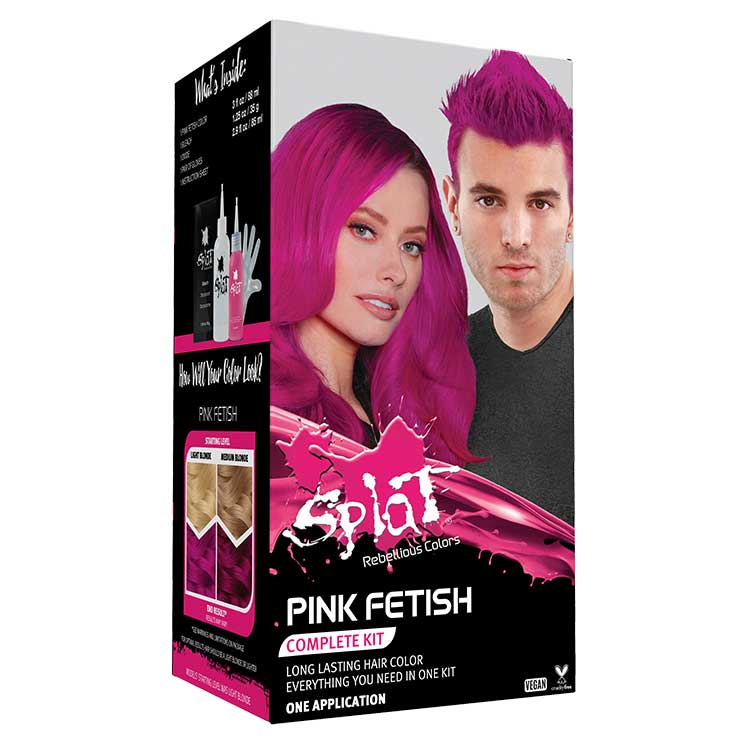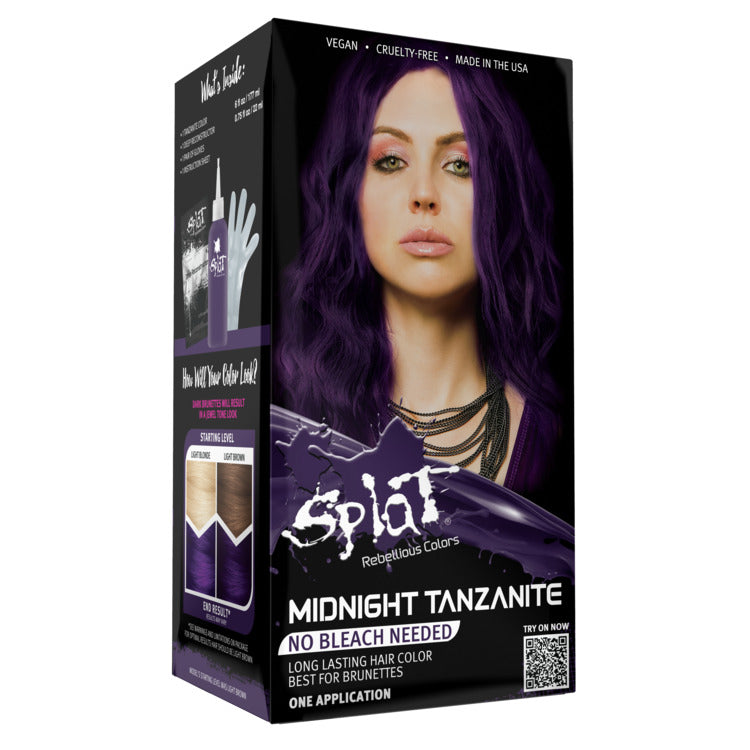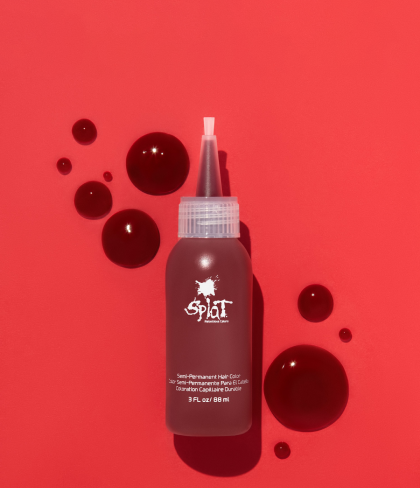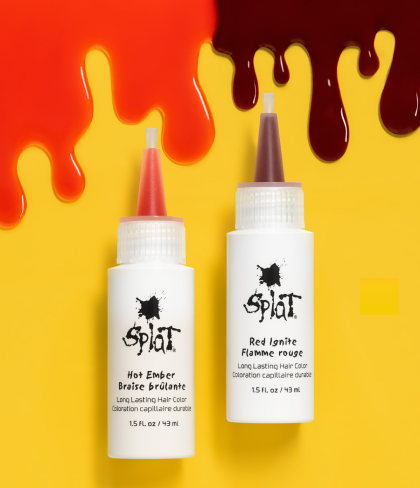At Splat, we’re dedicated to helping you look and feel your best, and to help you do that, we’ve started dedicating a few of our blogs to the more technical aspects of hair, hair color, and the hair coloring process. Hair porosity is one of those more technical topics that not everyone knows about when it comes to coloring their hair, but it’s actually a huge factor that affects how well your hair takes and holds onto artificial color. If you’ve ever dyed your hair and were left wondering why it didn’t go as bold or bright as you wanted, or why the color faded as fast as it did (or lasted longer than you expected), then read on to learn more about how and why that happens.
To put it loosely, hair porosity is how much moisture and product your hair can absorb and maintain. It determines how well oils, color, and moisture can move through your hair cuticle PLUS how long they can stay there.
There are three levels of porosity (low, medium, high):
- If you have LOW porosity hair, it’s harder for moisture, oils, and products to pass through your hair’s cuticle, which makes it hard for your hair to absorb it.
- If you have MEDIUM porosity hair, then oils, moisture, and products can easily pass through the cuticle (meaning they’re easy to absorb), plus your hair can also retain those products so they don’t leave your hair too quickly.
- If you have HIGH porosity hair, it’s easy for oils, moisture, and products to pass through your hair, BUT you may have a harder time retaining them.
BASICALLY, POROSITY SIMPLY REFERS TO HOW WELL YOUR HAIR CAN ABSORB MOLECULES SUCH AS MOISTURE, PRODUCT OR COLOR PLUS HOW LONG IT CAN HOLD IT!
Now that you have a better understanding of how hair porosity works, let’s dive into how it affects your ability to maintain or achieve a certain hair color.
- Your hair needs to be porous enough to absorb dye in the first place. If it’s not able to absorb the color, you’re going to wind up with a duller or more faded color than what you were trying to achieve.
- If your hair is too porous, it’ll definitely absorb color, but it may not last as long as you’d like because every time you wash or shampoo your hair, those color molecules will break down and wash out from your hair more easily – resulting in color that fades faster than you want.
SO – HOW DO YOU LEARN WHAT TYPE OF HAIR POROSITY YOU HAVE?
Try The Porosity Test:
- Wash and dry your hair.
- Use a comb or brush to release a few loose strands and put them into a tall glass of water.
- If your hair floats, it has low porosity, which means it will have a more difficult time both taking in and holding onto color.
- If your hair sinks, it has high porosity, which means it will take color but may not hold onto it too long.
- If it floats somewhere in the middle, then (you guessed it), it has medium porosity – which means your hair can absorb color easily and maintain it over time.
If you find out that you have high or low porosity hair, don’t be discouraged! Genetics is a big factor in determining how porous your hair is naturally, but there are many things you can do to help you change just how porous your hair is so that you can find that happy medium…
For Low Porosity Hair:
- Avoid protein-building products
- Avoid heavy oils and serums
- Use natural oils like honey, coconut, olive, and glycerin
- Wear a cap while deep conditioning and apply heat to help open the cuticle
For High Porosity Hair:
- Use ingredients with oils and butters
- Always use a leave-in conditioner to help lock in moisture
- Wash with lukewarm or cold water
- Reduce the use of heat and hot tools AND use a heat protectant when you do
Factors such as heat, shampooing, styling, bleaching, and straightening your hair can definitely affect your hair health. Overusing any of these products means you’re regularly opening up your hair’s cuticle, which makes it more porous over time.
- If you’re going to use heat to dry or style your hair (like a hairdryer, curling iron, straightening iron, and so forth), be sure to use a heat protectant spray or balm every time.
- Keep in mind that UV exposure can also affect your hair health – so that means too much sun can be ‘no fun’ for your luscious locks. Try adding some hats and head coverings to your wardrobe and wear one when you’re planning on being in the sun all day. And don’t forget your SPF!
When it comes to coloring your hair, we know that your goal is getting the exact same color you see on the box. We know that sometimes, it doesn’t always work out – you may wind up with a duller or more faded color, or you may find that your color doesn’t last as long as expected. Try doing a hair porosity test to know exactly what you’re working with when it comes to your hair, and then implement some of the tips and tricks above to get your hair into tip-top shape before your next color.
The more you know, the better you’ll feel. And the better you feel, the better you’ll look!

